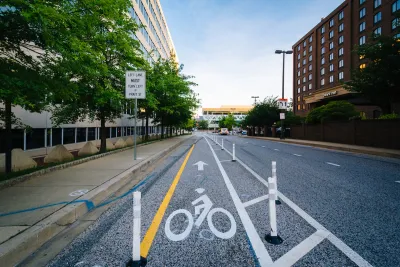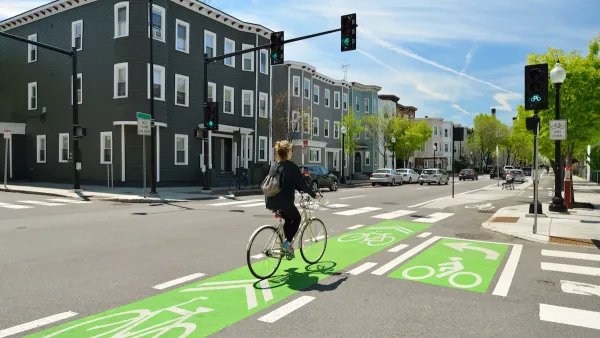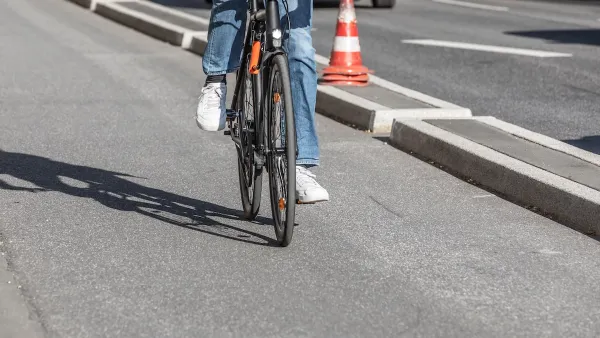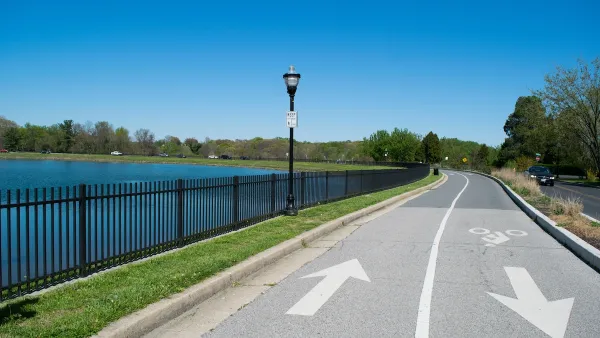Projects on roadways maintained by the state DOT will have to comply with Complete Streets requirements as part of a broader effort to reduce traffic deaths in the state.

The Maryland Department of Transportation (MDOT) issued a new, department-wide Complete Streets policy, signaling a renewed commitment to improving road safety for pedestrians and cyclists.
According to an announcement from MDOT, “the Complete Streets policy will ensure MDOT’s multi-billion-dollar capital program funds safe, complete streets for all Marylanders.”
Complete Streets requirements will apply to capital improvement projects, new or reconstructed streets connecting to MDOT rights-of-way, and “When there is an opportunity to improve safety for all users by applying proactive engineering safety countermeasures to resurfacing projects.”
The policy requires each MDOT mode or transportation type to develop strategies for implementation within the next six months “with the goal of increasing equitable access to the transportation network — from better transit connections to safer crossings.” It also focuses on driver education and traffic enforcement.
The statement notes, “The policy applies to new projects and is not retroactive for ones that have achieved 30% or more design and approval pursuant to the National Environmental Policy Act (NEPA) or that will achieve those milestones by December 1.”
FULL STORY: Maryland Transportation Secretary Wiedefeld Implements New Statewide Complete Streets Policy

National Parks Layoffs Will Cause Communities to Lose Billions
Thousands of essential park workers were laid off this week, just before the busy spring break season.

Retro-silient?: America’s First “Eco-burb,” The Woodlands Turns 50
A master-planned community north of Houston offers lessons on green infrastructure and resilient design, but falls short of its founder’s lofty affordability and walkability goals.

Delivering for America Plan Will Downgrade Mail Service in at Least 49.5 Percent of Zip Codes
Republican and Democrat lawmakers criticize the plan for its disproportionate negative impact on rural communities.

Test News Post 1
This is a summary

Test News Headline 46
Test for the image on the front page.

Balancing Bombs and Butterflies: How the National Guard Protects a Rare Species
The National Guard at Fort Indiantown Gap uses GIS technology and land management strategies to balance military training with conservation efforts, ensuring the survival of the rare eastern regal fritillary butterfly.
Urban Design for Planners 1: Software Tools
This six-course series explores essential urban design concepts using open source software and equips planners with the tools they need to participate fully in the urban design process.
Planning for Universal Design
Learn the tools for implementing Universal Design in planning regulations.
EMC Planning Group, Inc.
Planetizen
Planetizen
Mpact (formerly Rail~Volution)
Great Falls Development Authority, Inc.
HUDs Office of Policy Development and Research
NYU Wagner Graduate School of Public Service





























